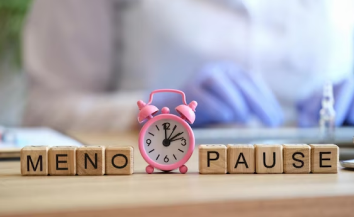You may also like…
Menopause: Treatments for heavy bleeding
Heavy bleeding during menstruation before menopause is very common. This may be because of hormonal changes or due to fibroids.
Fibroids- what are they?
These are benign (non-cancerous) growths, most commonly formed in the layer of uterus’ muscles, believed to be estrogen-dependent (requiring estrogen to grow), since they occur post-puberty and become smaller and regress considerably after menopause.
Many women don’t experience any symptoms related to menopause, while few of them experience debilitating heavy bleeding and may lead to anemia. If however, fibroids have a large size they can cause pressure symptoms such as frequency in passing urine, constipation and bloating, and sometimes, back pain.Fibroids may grow in the walls of the uterus muscles, or under the outside lining of this wall and may sometimes bulge inside the cavity of the uterus.
Most women do not require any treatment and women approaching menopause feel that they can manage symptoms, as the fibroids shrink after menopause. Where fibroids may cause pain or heavy or irregular bleeding, however, women may wish to consider treatment options.
Treatment options include:
Hormone-drugs to shrink fibroids, while treatment may be effective, it can only be used for a short period of time and the stopping of treatment usually sees the fibroid growing back to normal. In addition, it must be remembered that a number of side effects are seen with these hormonal medications.
Surgical-removing the uterus (hysterectomy), lining of the uterus (endometrial resection/ablation), removal of the muscle layer of the uterus (myomectomy).
Non-surgical uterine artery embolization (blood supply to fibroid is occluded) is carried out under X-ray control. Thus inserts a tube in the artery supplying fibroids and injecting a substance that stops the blood from reaching the fibroid. Over the following six-nine months, the fibroid will shrink.
Drug therapy options for heavy bleeding-
Tranexamic acid –this interferes with the clotting mechanism of the blood. Tablets are taken 8-hourly during menstruation. Tranexamic acid should not be used for women who have a history of deep vein thrombosis.
Mefenamic acid –this interferes with the clotting mechanism of the blood and provides pain relief too. In addition to mefenamic acid (Ponstan), similar drugs such as indomethacin, diclofenac and ibuprofen, may also be effective in reducing blood loss. (all these drugs belong to anti inflammatories). Women with a history of stomach ulcers may not be able to take these drugs and should consult their doctor for further advice.
The combined oral contraceptive pill - The use of both progestogens and oestrogen (both these woman hormones) will result in the lining of the womb (endometrium) being kept relatively thin and underactive. Thus, when this is shed during menstruation, blood loss is minimized.
Progestogens- Without ovulation, the body does not produce progesterone, and this often leads to irregular and heavy bleeding. Progestogens can be given, therefore, over the latter half of the cycle (day 14 to day 28) and, when they are stopped, menstruation begins. This not only regulates menstruation, but also tends to produce a lighter period. A particularly effective way of taking progestogens, in the form of Levonorgestrel(synthetic progestin hormone), is via an intrauterine coil. Once the coil (called a Mirena coil) is inserted into the uterus, it releases a continuous low dose of Levonorgestrel for approximately five years. After around three months of use, the majority of women find a significant reduction in menstrual flow, often ceasing to menstruate completely and have the added advantage of contraception through this.
A lot of blood loss is happening here, remember, that in addition to the medications mentioned above, it is very important to take iron tablets, these may be necessary for the treatment of anemia.






